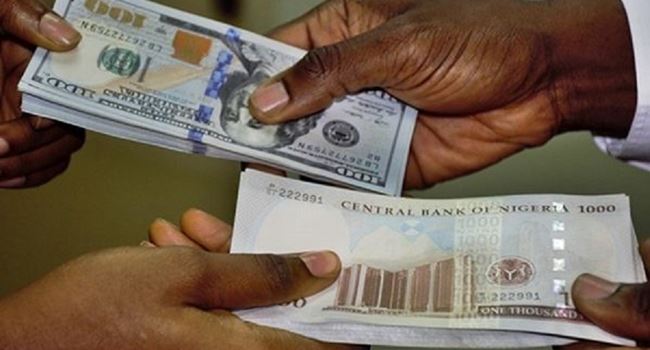May exchange below N1,000/1USD – Goldman Sachs
Nigeria’s naira could extend gains that have already made it the best-performing currency in the world this month, said a Goldman Sachs Group Inc. economist — provided policymakers stay on track.
The naira has rallied 12% against the dollar in April, adding to its 14% surge in March. Capital inflows and interest rate increases are helping it to retrace steep losses caused by two devaluations since June after the government loosened currency controls.
At one stage those had wiped 71% from its value, but the recent rebound has boosted it to N1,230 per dollar at its most recent official close versus a N1,627 record low on March 8.
Goldman economists, who predicted in February that the naira would strengthen to 1,200 per dollar during 2024, now see it potentially advancing beyond that level after a raft of measures by the central bank.
Those included 600 basis points of cumulative interest-rate increases at policy meetings in February and March, as well as other steps to ease the local scarcity of dollars that fanned volatility and forced companies to the parallel market. Local dollar liquidity has also been boosted after it cleared a backlog of overdue dollar purchase agreements estimated at $7 billion.
“This probably can run further; we would see an extension of the move to N1,000 and maybe even sub-N1,000,” Goldman’s Andrew Matheny said in an interview. Since Goldman’s call in February, “six weeks have gone by and they’re continuing to hold the line, so that’s encouraging,” he said.
The US lender still maintains its 12-month forecast for the naira at N1,200 per dollar, owing to uncertainty around the ability of the authorities to maintain the reform tempo, though there is a risk that it could strengthen beyond that.
The currency measures are part of bold steps introduced by President Bola Tinubu after he took power in May to end Nigeria’s years of economic stagnation.
The reforms, which included scrapping fuel subsidies, have sent inflation to a 28-year high and fanned a cost-of-living crisis that’s caused severe hardship for ordinary Nigerians.
The naira’s collapse, after many years of having its level artificially supported by the central bank on the official market, contributed significantly to the high inflation. But recent weeks have seen the unit regain some of its poise.
Thursday saw it changing hands at N1,188 per dollar on the parallel, or unofficial, market, an improvement from 1,195/dollar the previous day, according to Umar Salisu, a foreign-exchange trader in Lagos.
The rate reflects a narrow 3% premium over the official close on Monday, the most recent day for which data is available, prior to a three-day holiday in Nigeria.
Unifying the two exchange rates is an explicit Tinubu goal and the narrowing gap between the official and parallel market rates, which had been as wide as 30% earlier this year, has been another marker of the reforms’ success so far.
New Management
Governor Olayemi Cardoso, who took office in September, has been aggressive in lifting Nigerian borrowing costs to attract foreign cash and clearing a domestic backlog of dollar orders.
He replaced Godwin Emefiele, who was removed by the president soon after Tinubu took power and has since been charged with a range of alleged crimes. Emefiele denies wrongdoing and his trial is ongoing.
The next meeting of the monetary policy committee is on May 21. With inflation running at a yearly rate of 31.7% in February, the central bank will face pressure to raise rates again from current levels of 24.75%.
But Cardoso faces pushback from businesses, with the Manufacturing Association of Nigeria complaining in a statement that rate hikes “reduces access to funds, manufacturing investments and competitiveness.”
Goldman’s Matheny was also reserving judgment on whether the central bank will hold the line, though he noted that further rate hikes may not be necessary if inflation stabilizes and starts moderating.
“There are questions about how socially sustainable this strategy will be,” he said. “We don’t have high conviction that they’re going to stay the course. It’s still early days of the central bank rebuilding its credibility.”
Source: Bloomberg




